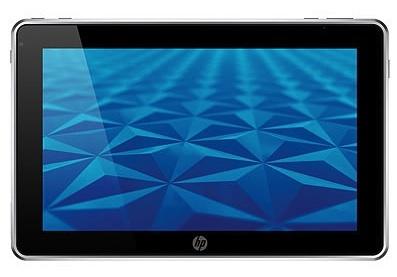
It’s not a surprise that webOS-faithfuls were taken aback and even a little disappointed when HP recently released a tablet without webOS. Like many of us, I only want to see webOS fulfill its potential and perceive HP’s backing of a Windows 7 tablet as a choice over webOS. Wanting only the best for webOS, I can’t help but wonder how HP’s move to produce the Slate with Windows 7 and put it to market first will impact a future webOS tablet. Will the two tablets be viewed as separate and distinct products by consumers or will they be grouped together, with the success of a webOS tablet riding on the public’s reaction to the HP Slate 500?
Despite feeling a bit betrayed by the official Slate announcement, especially after the back and forth rumors over whether it would ever come to pass, there is actually a certain validity in it coming to market first. Assuming HP never canned the Slate like many of us originally thought, the Slate was in the works well before the HP-Palm union and thus already invested in and farther along in the production cycle. The decision to put out a Windows 7 tablet first or at all is also more palatable considering that the Slate is not in lieu of a webOS tablet or even a direct competitor.
According to HP, the two tablets serve different niches and will be marketed as such. The Slate is now specifically geared to enterprise and business users. With a full Windows 7 operating system, capable of running any program available for a PC, this device is clearly suited for someone with productivity needs. It’s basically a netbook or travel PC in tablet form.
In contrast, a webOS tablet would likely be more of a consumer media device. With the streamlined, less cumbersome webOS operating system, it is better suited for running apps, fast internet surfing and the like. A webOS tablet would be a next-generation, super-sized Palm smartphone, minus the phone feature (and of course, physical keyboard).
Disappointment aside in seeing the arrival of the Slate, let alone it preceding a webOS tablet, the contrast in specs, operating systems and overall functionality means that the two devices will likely only be similar in appearance. Whether HP’s launch of a Windows 7 device will cloud or confuse consumer reaction to a webOS tablet later down the road is yet to be seen. Only time will tell whether the gap in and order of release times between the two HP tablets will impact one another, positively or negatively, and whether it will allow other competitor tablets with suspiciously similar workings to webOS to unnecessarily gain ground.
What do you think?